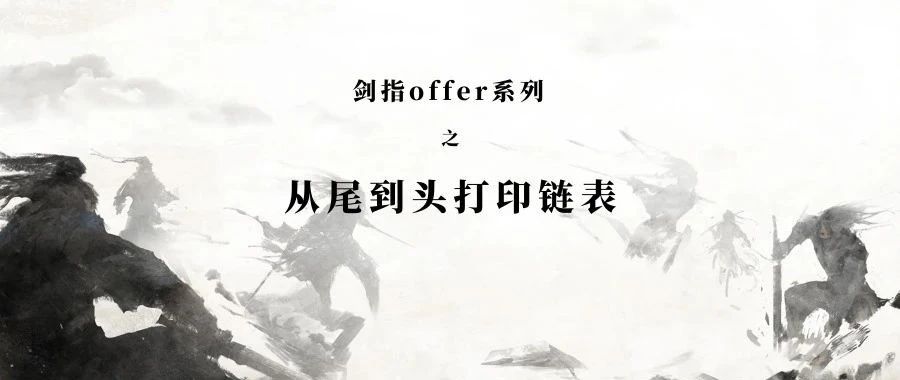
从尾到头打印链表
信息卡片
- 时间:2020-03-23
- 题目:从尾到头打印链表
- tag:
list
题目描述
输入一个链表,按链表从尾到头的顺序返回一个 ArrayList。
01
调用 reverse 函数
解题思路
这是一种简单粗暴的解法。先遍历一遍链表,在遍历链表的同时将当前指针指向的值放入 vector 数组中,直到链表遍历完成。最后,使用 reverse 函数将 vector 数组进行反转。
public:vector<int> printListFromTailToHead(ListNode* head) {vector<int>ArrayList;if(!head || !head->next)return {};while(head){ArrayList.push_back(head->val);head=head->next;}reverse(ArrayList.begin(),ArrayList.end());return ArrayList;}
};02
调用 insert 函数
解题思路
与解法一有些类似,依次从前往后遍历链表,在遍历链表的同时,调用 vector 的 insert 函数从头部插入此时链表指针指向的值。最后就得到了一个反转的数组。
class Solution {
public:vector<int> printListFromTailToHead(ListNode* head) {vector<int>ArrayList;if(head){ArrayList.insert(ArrayList.begin(),head->val);while(head->next){ArrayList.insert(ArrayList.begin(),head->next->val);head=head->next;}}return ArrayList;}
};03
调用栈方法
解题思路
创建一个元素为指针类型的栈,来存放链表的指针。在遍历链表的同时将指针入栈,此时栈的底部是链表的第一个元素,栈顶是链表的最后一个元素。弹出栈的时候把指针指向的值放入 vector 数组里面。
class Solution {
public:vector<int> printListFromTailToHead(ListNode* head) {stack<ListNode*> stackNodes;vector<int> ArrayList;ListNode* p=head;while (p != NULL){stackNodes.push(p);p = p->next;}while (!stackNodes.empty()){p=stackNodes.top();ArrayList.push_back(p->val);stackNodes.pop();}return ArrayList;}
};04
递归调用
解题思路
递归的本质就是一个栈结构,可以用递归来实现。要实现反过来输出的链表,我们每访问到一个节点的时候,先递归输出它后面的节点,再输出该节点自身,这样就得到反转的链表。
class Solution {
public:vector<int> printListFromTailToHead(struct ListNode* head) {vector<int> vec;printListFromTailToHead(head,vec);return vec;}void printListFromTailToHead(struct ListNode* head,vector<int> &vec) {if(head!=nullptr){if(head->next!=nullptr){printListFromTailToHead(head->next,vec);}vec.push_back(head->val);}}
};总结
解法四递归的方法看起来比较简洁,但是凡事都有利弊,当链表非常长的时候,就会导致函数调用的层级很深,从而有可能导致函数调用栈溢出。解法一、解法二、解法三要优于解法四。








 (aso项目记录)...)


)







